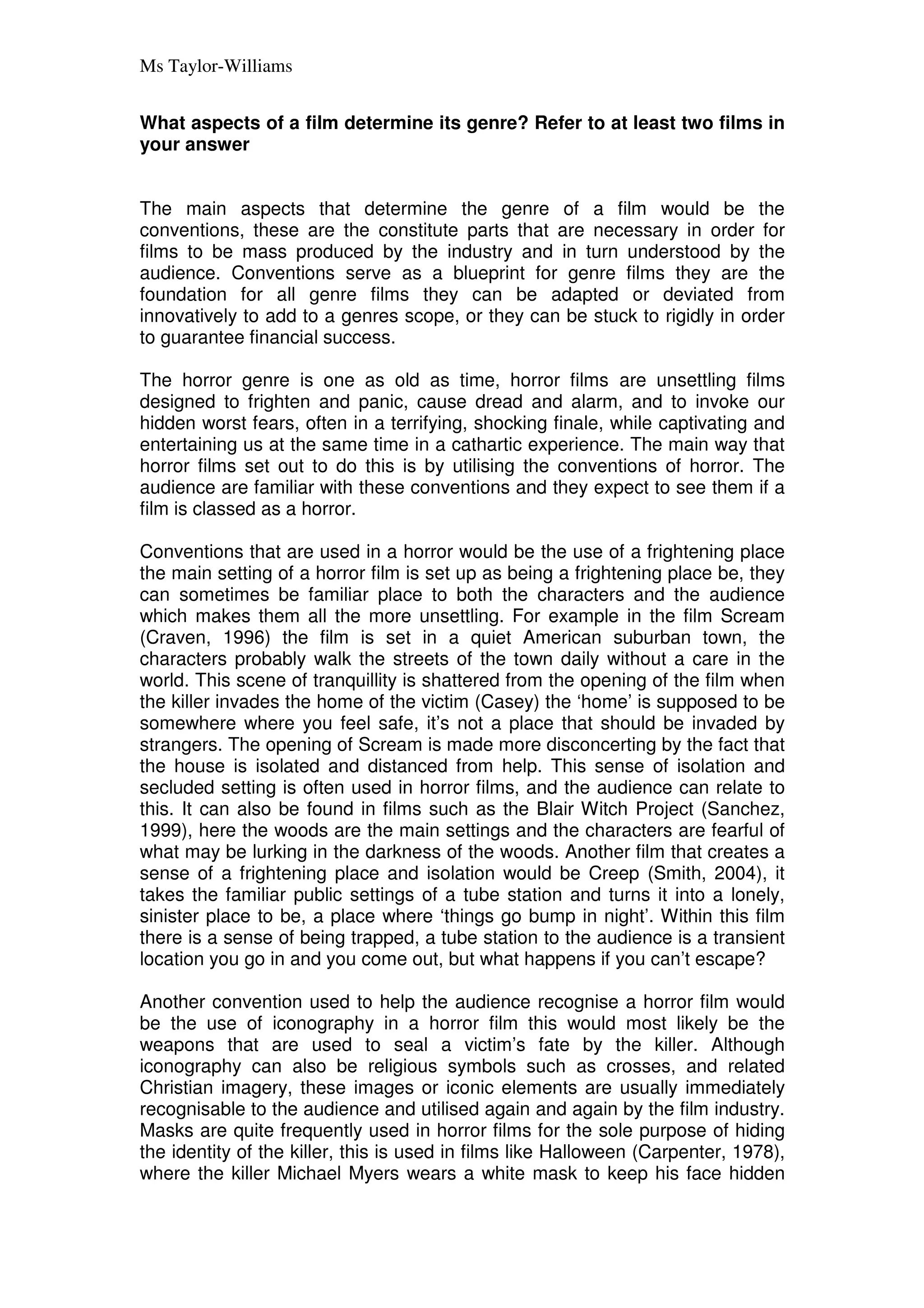The genre of a film is determined mainly by its conventions, which are consistent elements that allow films to be easily produced and understood by audiences. Conventions serve as a blueprint for genre films, and can be adapted innovatively or followed rigidly.
Horror films aim to frighten and invoke fear in audiences through terrifying climaxes, using familiar conventions. Key conventions in horror include isolated, frightening settings like the woods in The Blair Witch Project or a subway in Creep. Horror films also commonly feature weapons and masks used by killers to attack victims up close. Techniques like the point-of-view shot are used to place audiences in the killer's perspective and heighten fear, as in Halloween and Psycho

